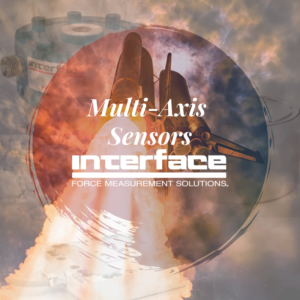
IQ Blog
Multi-Axis Sensor Applications
Interface Multi-Axis Sensors are used across industries, from testing rockets and drones to prostethics and medical devices. 2-axis, 3-axis, 6-axis sensor technology at Interface.

Interface Multi-Axis Sensors are used across industries, from testing rockets and drones to prostethics and medical devices. 2-axis, 3-axis, 6-axis sensor technology at Interface.

Interface's Weighing Your Options webinar showcases load cell and instrumentation solutions for cranes, lifting equipment, scales, and industrial applications. We detail weighcheck systems, load pins, load shackles, tension links, wireless products and more.
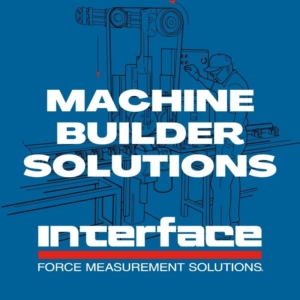
Interface provides machine builders with precision load cells, torque transducers, and instrumentation for machines, automation equipment, and tools used in R&D, fabrication and testing. Learn more about Interface's relationship with machine builders.
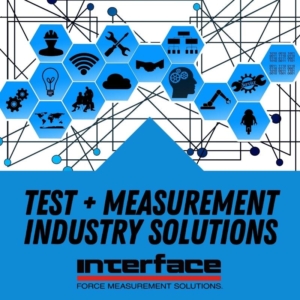
Interface provides world-class test and measurement products and calibration services that enable T&M professionals full access to complete systems, from sensors to instrumentation. Learn about our T&M industry solutions.

The construction industry uses force measurement solutions to protect heavy equipment, machinery and provide safety for their workers. Uses cases of construction applications for lifting, cranes and other machines using load cells and sensors.
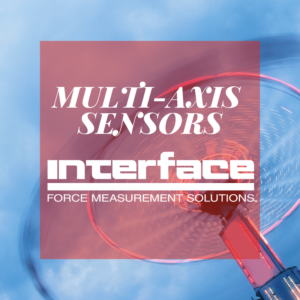
Interface Multi-Axis Sensors measure a multitude of forces and moments simultaneously with a single load cell sensor. The 3-axis, 6-axis, and axial torsion load cells provide excellent performance and accurate measurement. Video, 6-Axis and BX8 DAC
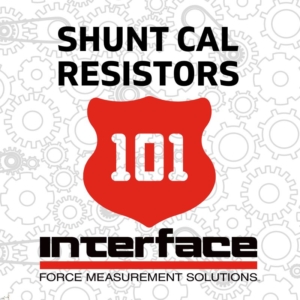
Interface shunt calibration resistors, known as RCAL Resistors, are an accessory product. A shunt calibration resistor is connected in parallel with a measurement instrument to provide a known resistance value. The purpose of the shunt cal resistor is to calibrate the instrument to accurately measure the current passing through it. Shunt calibration resistors are often used with load cells to improve the accuracy and reliability of their measurements.

Interface webinar Unlocking the Power of DAQ details trends, best practices and considerations for using data acquisiton in force measurement applications. We explore DAQ instrumentation options, trends and set-up options. Learn why data acquisition systems are growing in popularity for all types of use cases. We also detail the new Interface Data AQ Packs and system options for capturing critical data. Watch the online technical seminar for recommendations on equipment, plus we answser the most frequently asked questions about DAQ in test and measurement.

Interface Tech Talk experts answer the question how do load cells work. A load cell’s basic function is to take applied force and convert it into an output signal that provides the user with a measurement. This process of converting a force into data is typically completed through a Wheatstone bridge that is comprised of strain gages. There is a bending beam under the load and when weight or force is applied, the change in bend (deflection) results in change in output.
We use cookies to enhance your browsing experience, serve personalized content, and analyze our traffic. By clicking "Accept All Cookies", you consent to our use of cookies.
Accept All CookiesReject AllCookie SettingsWe may request cookies to be set on your device. We use cookies to let us know when you visit our websites, how you interact with us, to enrich your user experience, and to customize your relationship with our website.
Click on the different category headings to find out more. You can also change some of your preferences. Note that blocking some types of cookies may impact your experience on our websites and the services we are able to offer.
These cookies are strictly necessary to provide you with services available through our website and to use some of its features.
Because these cookies are strictly necessary to deliver the website, you cannot refuse them without impacting how our site functions. You can block or delete them by changing your browser settings and force blocking all cookies on this website.
These cookies collect information that is used either in aggregate form to help us understand how our website is being used or how effective our marketing campaigns are, or to help us customize our website and application for you in order to enhance your experience.
If you do not want us to track your visit to our site, you can disable tracking in your browser here:
We also use different external services like Google Webfonts, Google Maps and external Video providers. Since these providers may collect personal data like your IP address we allow you to block them here. Please be aware that this might heavily reduce the functionality and appearance of our site. Changes will take effect once you reload the page.
Google Webfont Settings:
Google Map Settings:
I agree to the terms and conditions laid out in the Privacy Policy



Please share your location to continue.
Check our help guide for more info.
